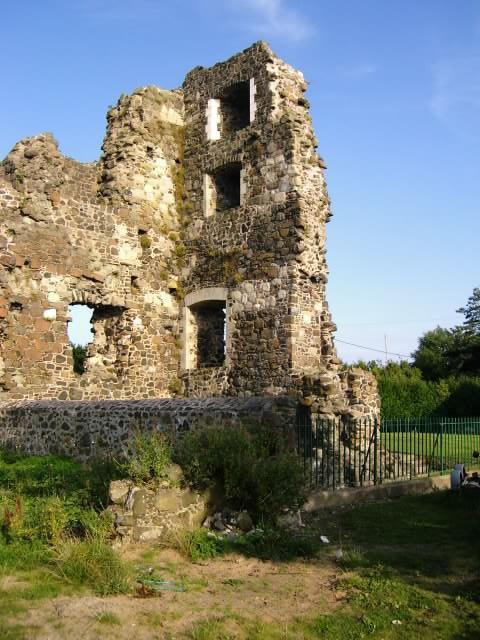Read
about Gunrunning in Larne 1914 |
||||
| Latharna (Laharna : Book of Lwinster.), the district of Lathair [Laher], son of Hugony the great, monarch of Ireland before the Christian era. Until recently it was the name of a district which extended northwards towards Glenarm; and the town was then called Inver-an-Laharna, the river mouth of (the territory of) Larne, from its situation at the mouth of the Ollarbha or Larne Water. Larne is a large town and ferry port
handling freight and passengers to the ports of Troon and Cairnryan in
Scotland and Fleetwood in England, it is situated at the mouth of Larne
Lough and has been used as a port for over 1,000 years, today the port
is the second largest in Northern Ireland. Larne's large natural harbour has always made the town of strategic importance, when the Vikings arrived in the 10th century there was already a town there. Edward Bruce brother of Robert Bruce landed an army of 6,000 men at Olderfleet near the town in 1315, hoping to gain the high kingship of Ireland. Larne was an important emigration port the first ship carrying emigrants, 'The Friends Goodwill' sailed from the port in May 1717 bound for Boston, many citizens of that town can trace their ancestry to this and subsequent voyages. In 1914 Protestant loyalists opposed to The Irish Home Rule Bill, imported arms and ammunition from Germany in a vessel called 'The Clyde Valley' Larne is at the southern end of the Antrim Coast Road, the A2 which is renowned for its scenic beauty, the road was blasted from the limestone cliffs in the mid 1800's making the equally famous and beautiful Glens of Antrim more accessible. A railway connects the town to Belfast, via Whitehead and Carrickfergus. There are two memorials in Larne one recalls the sinking of the passenger ferry Princess Victoria in 1953 when 128 persons perished shortly after leaving Scotland. The other is the Chaine memorial which is a 90 ft granite tower built in 1888 as a memorial to William Chaine a local MP it was he who was largely responsible for developing the steam boat service between Larne and Scotland. The tower is now used as a lighthouse. Larne once was a centre of shipbuilding, there were two yards, the Larne Shipbuilding Co and the Olderfleet Shipbuilding and Engineering Co. These yards flourished for about thirty years up to the end of the first world war in 1918. Famous people connected with the town was Hugh Nelson (1830-93) who rose to become Lieutenant Governor of British Columbia. He was a native of Larne, the son of Robert Nelson and Frances Quinn, the family emigrated to California in 1854, moving to British Columbia in 1858. Another was Henry McNeill, who did much for the embryo tourist industry in the north with his hotel in Larne (McNeill's Hotel) the hotel was demolished to make way for redevelopment. McNeill's also owned The Garron Tower which he converted into a hotel. The town and surrounding area was badly effected by the great famine of 1845-48 It was towards Larne that the ill fated passenger ferry Princess Victoria was bound when she sank east of The Copeland Islands on 31st January 1953 with a loss of 132 lives. A lifeboat station was established at Larne in 1994, click to read more on the Larne Lifeboat Station website.
|
||||
|
|


